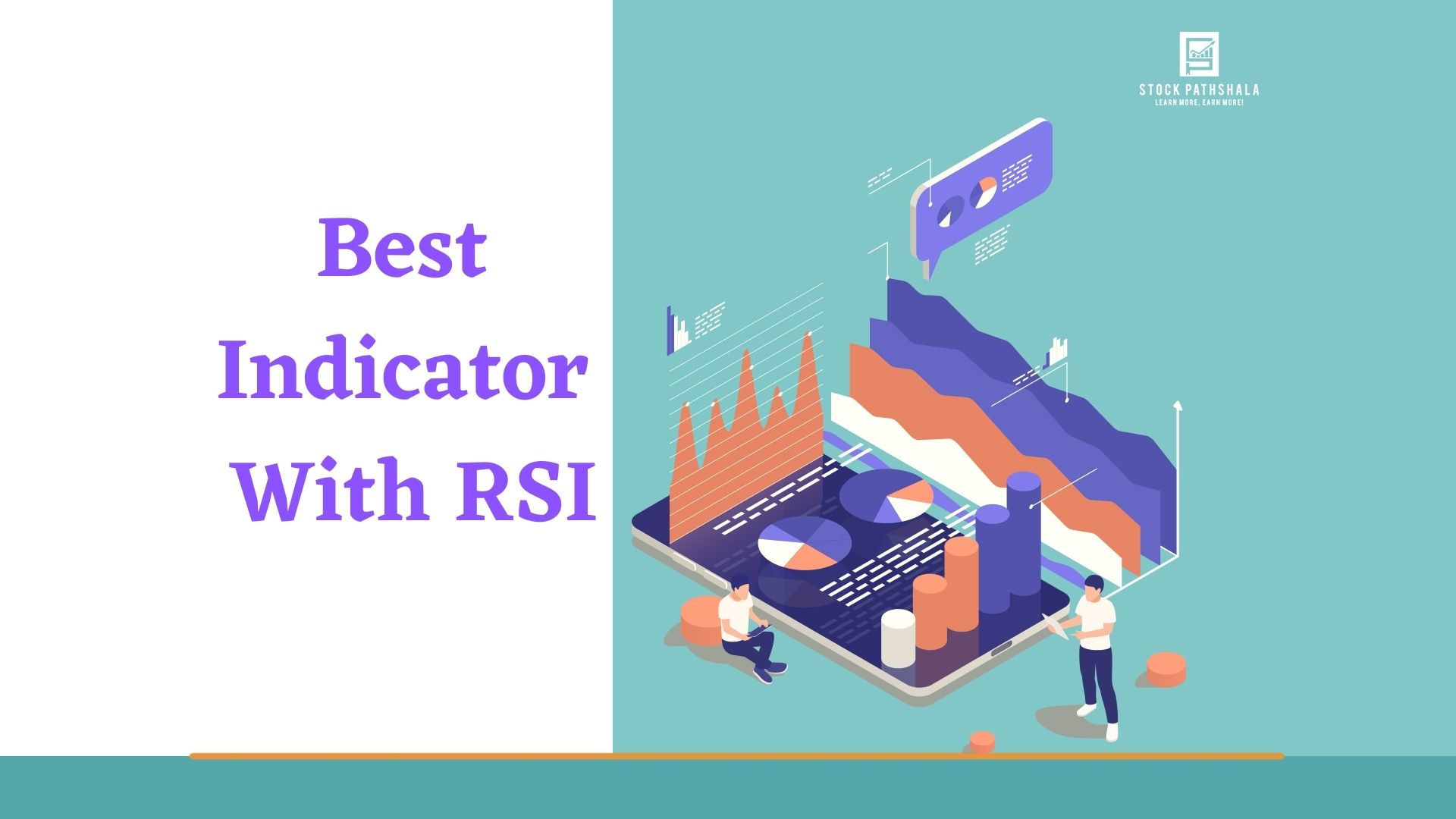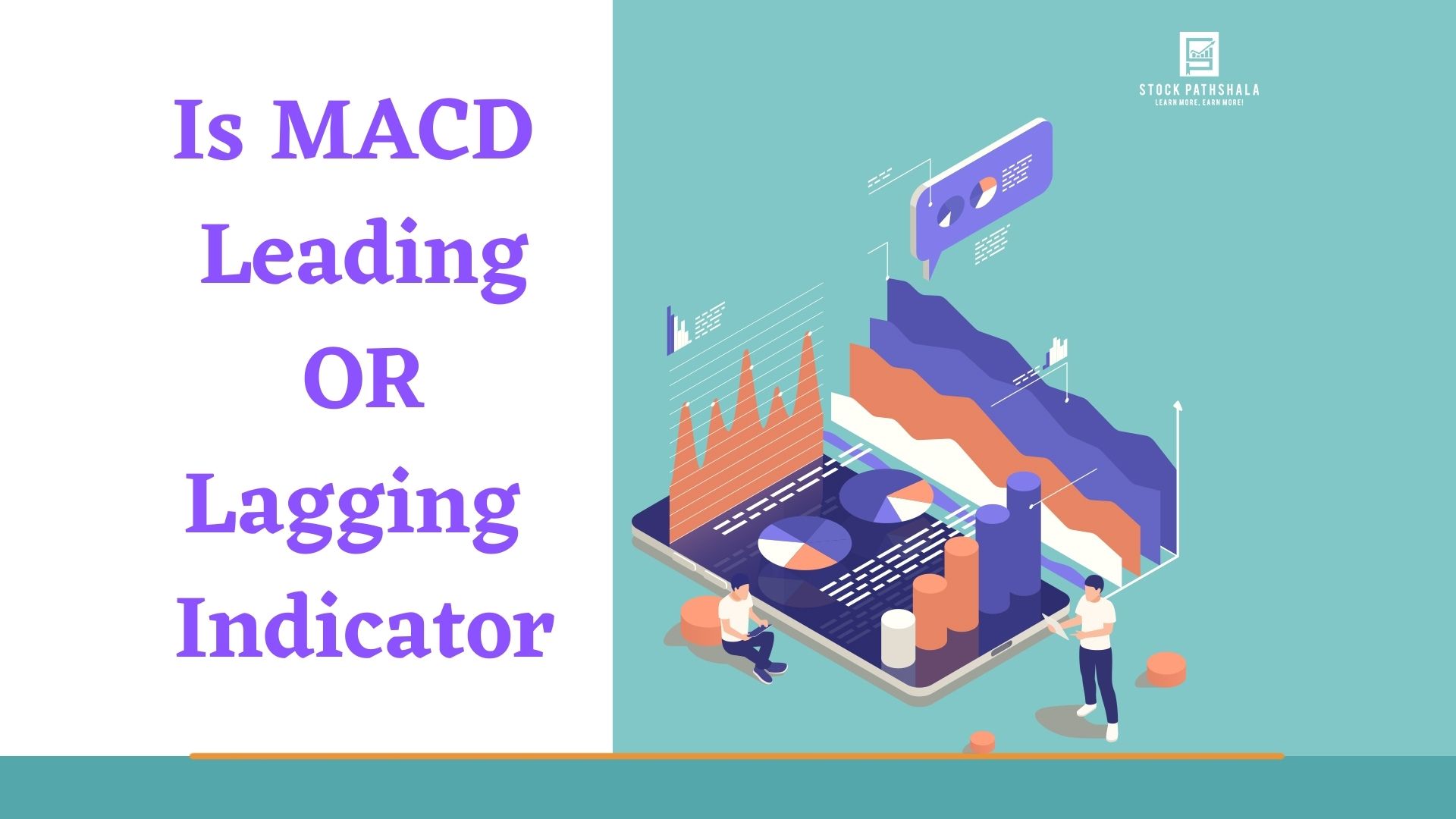Are you an options trader seeking to navigate the markets without drowning in risk? Then you can rely on some of the best indicators for options trading. are the signals that help in analyzing market risks and trends. Luckily, Stock Patshala has your back with our article on the best indicators for options trading. Keep reading to stay steady in the market waves!
“Risk comes from not knowing what you’re doing.”
– Warren Buffett
Best Indicator for Options Trading in India
Several indicators can guide you in predicting the market but some work better than others. In options trading the top indicators are given below:
The Relative Strength Index (RSI)
The RSI is a technical indicator that measures the magnitude of recent price changes to evaluate overbought or oversold conditions in the market. The RSI is displayed as an oscillator and has a range of 0 to 100. A reading above 70 is generally considered overbought, while a reading below 30 is considered oversold.
In the chart given above, the purple line shows the RSI indicator and the yellow line is the RSI-based moving average. As you can see the RSI value is 63.72. So there are no overbought or oversold conditions yet.
To minimize the risk you do not make decisions immediately when RSI goes above 70 or below 30, rather you should wait for it to rise above and then drop or vice versa.
Divergence in RSI
Divergence is a powerful tool used by traders to identify potential changes in trends. It occurs when the price of a stock or an index moves in a different direction than the RSI.
In options trading, RSI divergence is a signal that can be used to identify potential trading opportunities. If the RSI is moving in the opposite direction of the stock or index price, it suggests that the current trend may be losing momentum, and a reversal may be imminent.
There are two types of RSI divergence:
- Bullish Divergence: This occurs when the stock or index is making lower lows, but the RSI is making higher lows. It suggests that the price may soon reverse and start moving higher.
- Bearish Divergence: This occurs when the stock or index is making higher highs, but the RSI is making lower highs. It suggests that the price may soon reverse and start moving lower.
RSI divergence can be used in combination with other technical indicators and fundamental analysis to make better trading decisions in options trading. It is important to remember that RSI divergence is just one tool in a trader’s toolkit, and it should not be relied on solely for making trading decisions.
The chart given above shows the RSI indicator. As you can see in reference to the white line, the market is down but the RSI is going up. This means in the current situation the price may reverse soon and will start to go in the opposite direction.
The Moving Average
It is used to smooth out price fluctuations and identify trends in the market. It is calculated by taking the average price of a security over a specified period, with the most common periods being 50, 100, and 200 days. The moving average can help traders identify potential buy and sell signals based on their crossover with the current price of the stock.
For example; in the chart given above, the blue line indicates Moving Average. When the price is going above the moving average, this means there is an uptrend in the market and when it is going below, this implies the trend is downtrend.
Moving Average with Crossover
Moving average crossover involves plotting two or more moving averages on a price chart and using the intersection of those moving averages to generate trading signals.
The crossover strategy uses two moving averages of different lengths, such as a 20-day moving average and a 50-day moving average. When the shorter-term moving average (20 days) crosses above the longer-term moving average (50 days), it is seen as a bullish signal, indicating that the price trend is likely to continue upward. On the other hand, when the shorter-term moving average crosses below the longer-term moving average, it is seen as a bearish signal, indicating that the price trend is likely to continue downward.
Options traders can use moving average crossovers to determine when to enter or exit a trade.
For example, if the shorter-term moving average crosses above the longer-term moving average, it may be a good time to buy a call option on the underlying asset. Conversely, if the shorter-term moving average crosses below the longer-term moving average, it may be a good time to buy a put option on the underlying asset.
It is important to note that moving averages are lagging indicators, meaning that they are based on past prices and do not predict future prices. Traders should use other indicators and analyses in conjunction with moving averages to make informed trading decisions.
Open interest
It refers to the total number of outstanding contracts for a particular security or asset. It represents the total number of contracts that have not been closed out or exercised by the end of a trading session. Higher open interest is typically seen as an indication of increased liquidity and a higher probability of price movements.
In other words, the higher the open interest, the higher the option traders are involved in a contract for some specific strike price.
Look at the NSE Options Chart above. Here the OI stands for Open Interest. For every contract, there is a different OI. To analyse the market in a better way with Open Interest, refer to the image below.
How to Use Indicators in Options Trading
Identify trends: You can identify the market trends through the Indicators. For instance, Moving Averages or the Relative Strength Index (RSI) can help identify trends in the underlying asset. With this, you can determine which option strategy you may employ, such as a bullish or bearish strategy.
Timing entry and exit points: Where to enter the market and when to lose it? The Indicators can help traders identify potential entry and exit points. For example, if the RSI indicates an asset is overbought, it may be a good time to sell a call option. Similarly, if the RSI indicates that an asset is oversold, it may be a good time to buy a call option.
Confirming signals: Using a combination of Indicators can give you a green flag to go ahead. They can be used to confirm signals from other technical analysis tools, such as chart patterns or trendlines.
RSI is a momentum oscillator and it measures the speed and change of price movements, while, Moving Average (MA) is a trend-following indicator and it calculates the average price of an asset over a specified period. It’s good to combine RSI and Moving Average to generate trading signals. For example, you can use the 50-day moving average and the 14-day RSI. When the asset price crosses above the 50-day moving average and the RSI is above 50, it may be a signal to buy a call option.
Conversely, when the asset price crosses below the 50-day moving average and the RSI is below 50, it may be a signal to buy a put option.
Managing risk: Indicators can be used to manage risk by setting stop-loss orders. Traders can use technical analysis indicators to determine the appropriate stop-loss level for a given trade.
Monitoring market sentiment: Indicators can help traders monitor market sentiment and adjust their trading strategy accordingly. For example, if the put-call ratio is indicating a bearish sentiment, a trader may want to consider buying put options or adjusting their existing position to a more bearish strategy.
Conclusion
Although these indicators are a boon for technical analysis we still suggest you not to completely depend on the indicators when you are making decisions while trading. For all other factors and trading psychology, you can enrol in our stock market courses.
In case you’d like us to call you back to explain more about stock market learning, just leave your contact info below:
Before investing capital, invest your time in learning Stock Market.
Fill in the basic details below and a callback will be arranged for more information:









